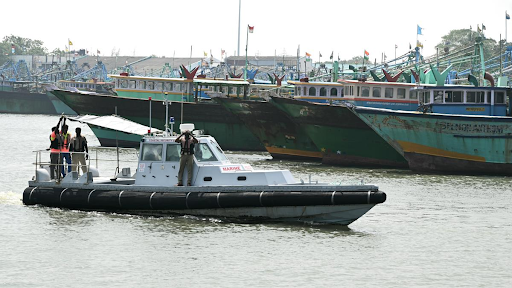




Source: EURASIANTIMES
Disclaimer: Copyright infringement not intended.
In April 2025 the Russian Ministry of Defence officially acknowledged the threat posed by Ukraine’s newly developed short-range ballistic missile, the Sapsan.
The Sapsan missile enhances Ukraine's long-range strike capability amid its ongoing conflict with Russia representing a significant technological leap.
|
Feature |
Details |
|
Other Names |
Hrim-2 (Ukrainian name), Grom-2 (export variant) |
|
Type |
Tactical Ballistic Missile System |
|
Origin |
Ukraine |
|
Purpose |
Combines features of a tactical missile system and a multiple rocket launcher |
|
Range (Export version) |
50 km to 280 km |
|
Range (Ukrainian Armed Forces version) |
Up to 700 km |
|
Warhead |
480 kg payload; available in unitary and cluster configurations |
|
Mobility |
Mounted on a 10-wheeled Transporter-Erector-Launcher (TEL) carrying two missiles |
|
Launch Capability |
Capable of launching both ballistic and cruise missiles |
|
Guidance and Navigation |
Inertial navigation with radar-based and optoelectronic guidance systems |
|
Key Feature |
Aero-ballistic trajectory enabling evasion of air defense systems like S-300, S-400 |
|
Comparable System |
Russian 9K720 Iskander |
With a 700 km range Sapsan allows Ukraine to target deep inside enemy territory including critical logistics hubs and military bases.
Its aero-ballistic flight path reduces interception chances posing challenges to sophisticated Russian defense systems.
Ability to fire both ballistic and cruise missiles adds flexibility — useful for different tactical scenarios like coastal defense or deep strikes.
Emergence of Sapsan strengthens Ukraine’s deterrence posture and represents a shift in regional military balance. It may trigger further missile defense upgrades by Russia and reshape strategic calculations.
|
Parameter |
Sapsan (Ukraine) |
Iskander (Russia) |
|
Type |
Tactical ballistic missile |
Tactical ballistic missile |
|
Range |
Up to 700 km (Ukrainian version) |
Around 500 km |
|
Mobility |
10-wheeled TEL with 2 missiles |
8-wheeled TEL with 2 missiles |
|
Guidance |
Inertial, radar, optoelectronic |
Inertial, GLONASS (Russian GPS) |
|
Air Defense Evasion |
Aero-ballistic |
Aero-ballistic |
|
Multi-role Capability |
Ballistic + Cruise missiles |
Primarily ballistic |
Sources: EURASIANTIMES
|
PRACTICE QUESTION Q. Which of the following statements about the Sapsan missile is correct?
Select the correct answer: Answer: a Explanation: Statement 1 is correct. The Sapsan system is designed to be versatile meaning it can launch both types of missiles ballistic (high-speed, high-arc trajectories) and cruise (low-altitude, guided flight). This allows it to perform diverse roles from land attacks to air defense support. Statement 2 is correct. Sapsan's onboard control system primarily uses inertial navigation (self-contained system relying on accelerometers and gyroscopes). To improve targeting precision, it is integrated with radar-based (active tracking) and optoelectronic components (like infrared and visual tracking). This improves resistance to electronic jamming and GPS denial. Statement 3 is incorrect. Sapsan is NOT designed for submarine launches. It is a land-based system, mounted on a 10-wheeled Transporter-Erector-Launcher. There is no underwater or naval launch variant known for Sapsan. |





© 2025 iasgyan. All right reserved